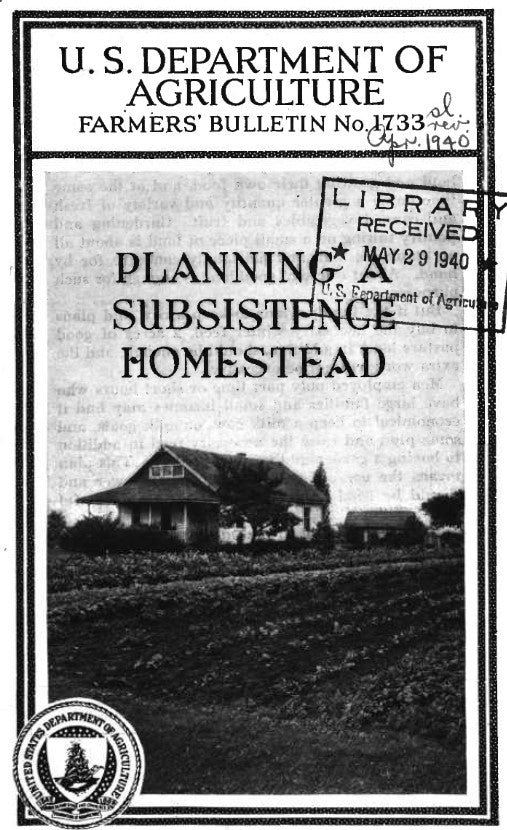Great Lakes Staple Seeds
Skills (1940) Planning a Subsistence Homestead
Skills (1940) Planning a Subsistence Homestead
Couldn't load pickup availability
USDA Famers' Bulletin No. 1733 by Walter W. Wilcox, junior agricultural economist, Division of Farm Management and Costs, Bureau of Agricultural Economics; 1940
"Planning a Subsistence Homestead," authored by Walter W. Wilcox and published as a Farmers' Bulletin by the U.S. Department of Agriculture, serves as a practical guide for families seeking to achieve self-sufficiency by growing their own food and maintaining small-scale livestock. The bulletin emphasizes the economic benefits and challenges associated with subsistence farming, especially for families with limited incomes.
Key Topics Covered
-
Renewal of Interest in Subsistence Farming: The bulletin highlights the growing interest in subsistence farming due to economic hardships and government policies. This approach combines part-time farming with external wage work to meet family expenses.
-
Selecting Land Near Cities: Selecting the right piece of land is crucial. Factors such as soil quality, distance from employment opportunities, water availability, and proximity to community services like schools and hospitals are critical. The bulletin advises against choosing land solely based on low price, as poor soil quality can negate the benefits of cheap land.
-
Vegetable, Poultry, and Fruit Production: Detailed plans for vegetable gardens in different regions (North and South) are provided. The bulletin suggests planting a variety of vegetables and fruits to ensure a continuous supply throughout the year. A small poultry flock and a few fruit trees are recommended to complement the garden produce.
-
Layout for a Small Acreage: The bulletin provides illustrative plans for using approximately one acre of land effectively. These plans take into consideration factors such as soil type, topography, and the specific needs of different regions. Key considerations include the proximity of the garden to the house, the location of poultry, and the placement of fruit trees.
-
Cash Expenses and Returns: An estimated budget for the necessary cash expenses and potential returns from a subsistence homestead is outlined. The costs include plowing, seeds, fertilizers, insecticides, and chicken feed, while the returns come from the produce, eggs, and poultry meat generated.
-
Winter Vegetable and Fruit Supply: Methods for storing, drying, and canning surplus produce are discussed to ensure an adequate winter supply. The bulletin provides canning budgets for families in different regions, detailing the quantities of various foods needed to sustain a family of five through the non-productive months.
-
Feed and Livestock Production: Suggestions for integrating livestock, such as cows, goats, and pigs, into the subsistence homestead are provided. The bulletin discusses the space and resources required to maintain these animals and the benefits of producing one's own milk, butter, and meat.
-
Limitations and Practical Considerations: The bulletin advises caution, emphasizing that subsistence farming requires significant labor and may not always yield the expected savings. It underscores the importance of realistic expectations and the need for external income to meet non-food expenses.
-
Possibilities of a Small Wood Lot: The benefits of having a small wood lot for fuel are discussed, along with the potential for reducing cash outlays for heating.
-
Self-Sufficing Farms: The bulletin provides insights into self-sufficing farms, where a significant portion of the produce is consumed by the farmer's family. It notes that many of these farms are located in regions with poor soil and limited economic opportunities.
Conclusion
"Planning a Subsistence Homestead" is a comprehensive guide designed to help families achieve a degree of self-sufficiency through careful planning and efficient use of small plots of land. It provides practical advice on land selection, garden layout, livestock management, and food preservation, while also highlighting the economic realities and challenges of subsistence farming. The bulletin is a valuable resource for anyone considering this lifestyle, offering insights based on historical practices and economic considerations.

